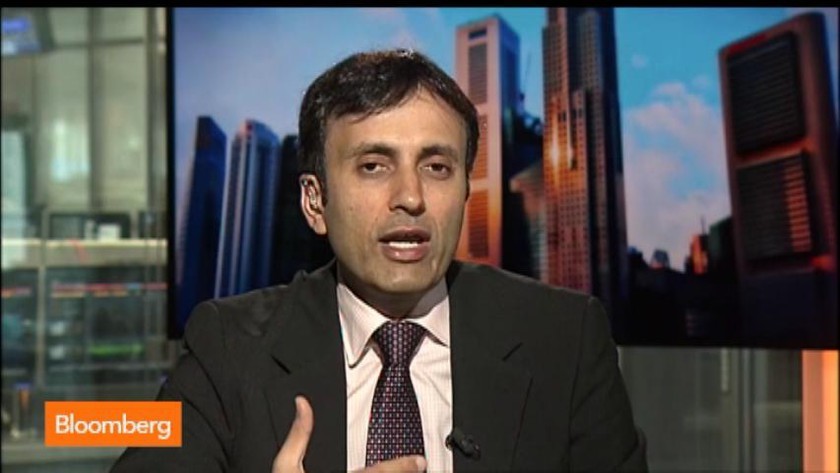India RBI Says Curbing Inflation Is its Top Priority Bloomberg Business
Post on: 16 Март, 2015 No Comment

Duvvuri Subbarao, governor of the Reserve Bank of India (RBI), has raised rates the most number of times among Asian central banks this year as the nation’s benchmark wholesale-price inflation rate hovered around 10 percent. Photographer: Adeel Halim/Bloomberg
Aug. 25 (Bloomberg) — India’s central bank said controlling inflation is its top priority, a stance that may fuel speculation it will raise interest rates for the fifth time since mid-March.
“Inflation containment may have to receive precedence over the other policy objectives,” the Reserve Bank of India said yesterday in its annual report for the year ended June 30. “Inflation has emerged as a major concern.”
India’s 10-year government bond yields climbed to the highest in more than three months, stoked by inflation concerns. While India has to tackle rising prices, it must keep an eye on the risks to growth posed by a faltering global recovery, Reserve Bank Deputy Governor Subir Gokarn said.
“The Reserve Bank will continue to tighten rates,” said Jay Shankar, chief economist at Religare Capital Markets Ltd. in Mumbai. “Inflation expectations remain worrisome.” He expects rates to be raised by as much as a percentage point by March 31.
Governor Duvvuri Subbarao has raised rates the most number of times among Asian central banks this year as the nation’s benchmark wholesale-price inflation rate hovered around 10 percent. Malaysia is second with three rate increases.
Subbarao on July 27 boosted the reverse repurchase rate by half a percentage point to 4.5 percent and the repurchase rate to 5.75 percent from 5.5 percent. The bank is scheduled to release its next monetary policy statement on Sept. 16.
“Less Comfort”
“Inflation pressures are coming up sharply while the global economy has moved from a state of some comfort to a state of less comfort,” Gokarn told reporters in Mumbai yesterday. “Balancing the domestic and the global scenario has been the main context in which our policy has been thought about and actions taken.”
Last quarter, the U.S. economy grew at a slower-than-estimated 2.4 percent annual pace, China’s expansion eased to 10.3 percent while Japan’s economy grew at less than a fifth of the pace economists estimated, adding to signs that the global recovery is losing its momentum.
By contrast, India’s economic growth may accelerate to 8.5 percent in the 12 months to March, the central bank estimates. It expects the wholesale-price inflation rate at 6 percent by the end of the financial year.
Prices of homes in Faridabad, a town outside New Delhi, have climbed as much as 80 percent since January, according to Rajeev Sethi, proprietor of Rajeev Properties, a local real-estate broking company.
Asset Prices
The Bombay Stock Exchange’s Sensitive Index has more than doubled to 18,204.77 since February 2009 as investors bought shares of Tata Motors Ltd. and State Bank of India Ltd. betting on the nation’s growth prospects.
“Higher asset prices generally tend to fuel the demand pressures in the economy and thus contribute to inflationary pressures,” the Reserve Bank said. “The increasing generalization of inflation indicates emergence of inflationary pressures from the demand side, which will require active demand-management policies in the near term.”
Given India’s growth outlook and the probability of advanced economies delaying their monetary stimulus exit, capital inflows into the country could accelerate, which will have to be managed, the Reserve Bank said.
The rupee, which traded at 46.95 against the dollar as of 12:03 p.m. in Mumbai, may strengthen to 45.5 by the fourth quarter of 2010, according to the median forecast of 21 analysts in a Bloomberg News survey.
Yields Rise
Ten-year government bond yields advanced three basis points to 8.04 percent, climbing 22 basis points since Aug. 16. A basis point is 0.01 percentage point.
“High and generalized inflation, if it persists, in itself is a risk to growth through its unfavorable effects on resource allocation as well as unfavorable redistributive effects on the poor,” according to the report.
Inflation dominated the first two weeks of Parliament’s monsoon session that started on July 26, with opposition parties criticizing Prime Minister Manmohan Singh’s government for failing to check rising prices.
Finance Minister Pranab Mukherjee said prices would begin to ease after the June-September monsoon rains boost farm output.
The rains are the main source of irrigation in India. Farmers have planted crops over 10 percent more land this season from a year earlier, according to the farm ministry.
Prices are already showing signs of cooling. The inflation rate based on wholesale prices was 9.97 percent in July, the slowest in six months.
“With a near-normal monsoon, it is expected that the economy will again reach the high-growth, moderate-inflation trajectory that was experienced before the global crisis,” according to the central bank’s report.
To contact the reporter on this story: Kartik Goyal in New Delhi at kgoyal@bloomberg.net ; Anoop Agrawal in Mumbai at aagrawal8@bloomberg.net
To contact the editor responsible for this story: Chris Anstey at canstey@bloomberg.net ; Hari Govind at hgovind@bloomberg.net














